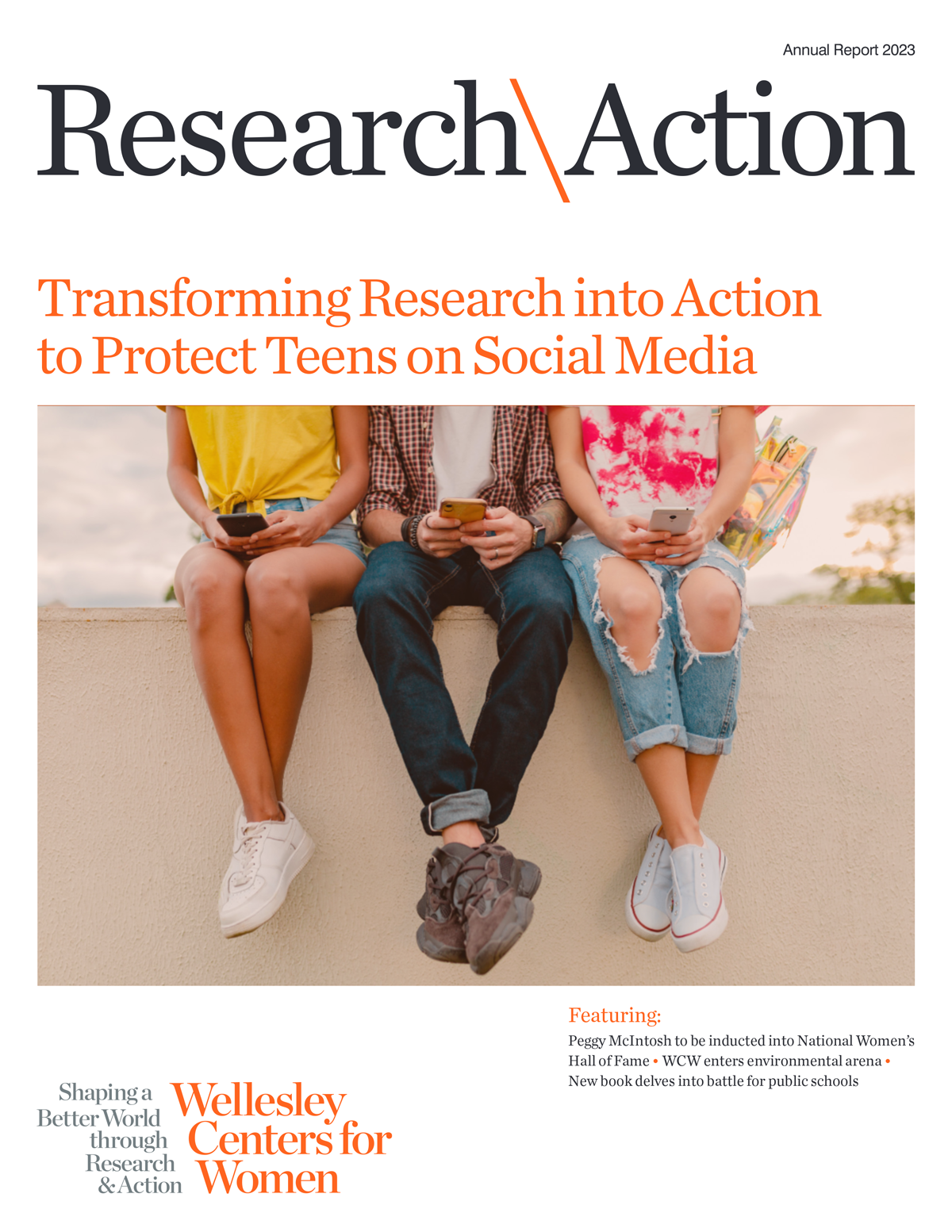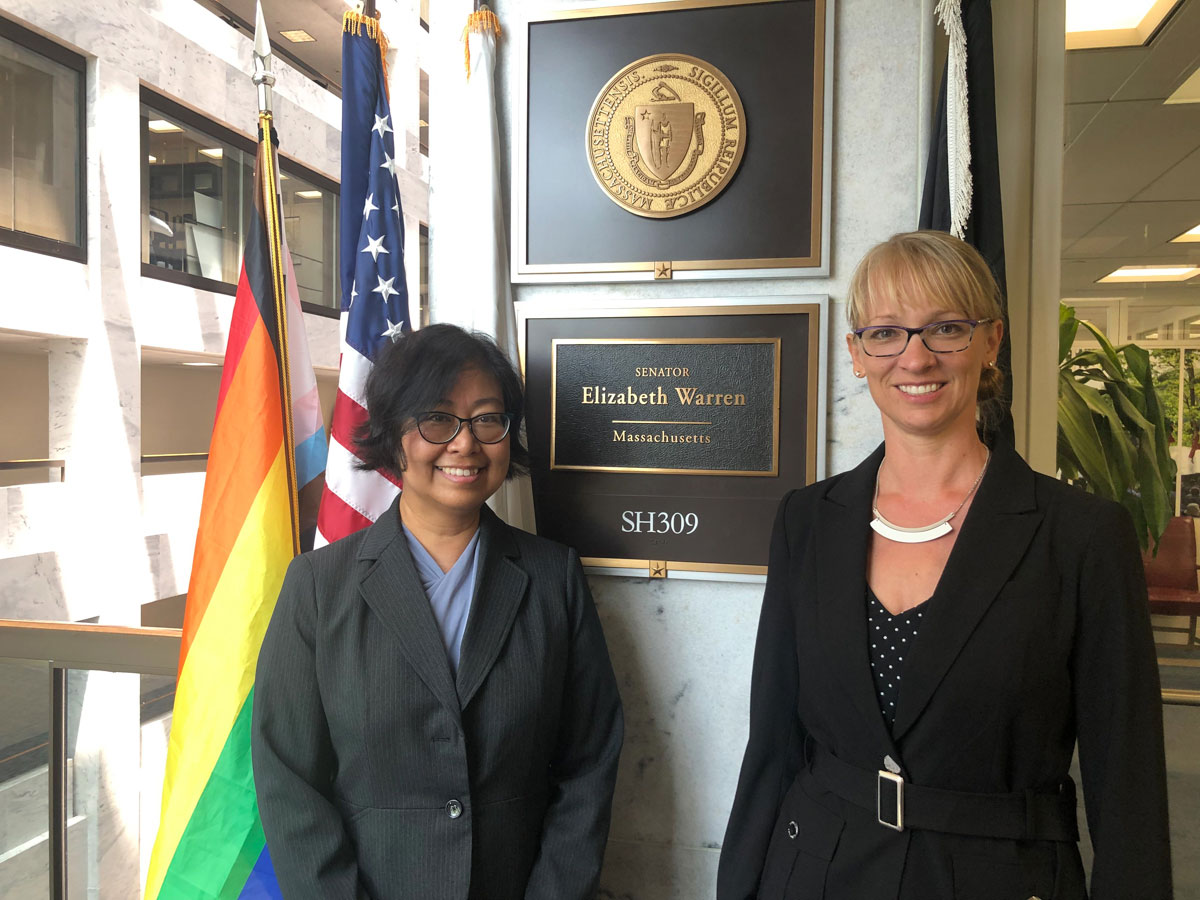 Charmaraman with Beth A. Jerskey, Ph.D., a clinician and Federal Advocacy Coordinator for MassachusettsIt all started with a podcast. In November 2021, Senior Research Scientist Linda Charmaraman, Ph.D., was invited on Speaking of Psychology, the podcast of the American Psychological Association (APA). It was several months after documents leaked to the media revealed that Facebook’s internal research had found that its apps could be harmful for teen girls’ mental health. Charmaraman talked about what her research showed about the effects of social media on teens’ health and wellbeing.
Charmaraman with Beth A. Jerskey, Ph.D., a clinician and Federal Advocacy Coordinator for MassachusettsIt all started with a podcast. In November 2021, Senior Research Scientist Linda Charmaraman, Ph.D., was invited on Speaking of Psychology, the podcast of the American Psychological Association (APA). It was several months after documents leaked to the media revealed that Facebook’s internal research had found that its apps could be harmful for teen girls’ mental health. Charmaraman talked about what her research showed about the effects of social media on teens’ health and wellbeing.
At the end of the interview, host Kim I. Mills asked Charmaraman about the practical application of her work: “How does it get used and translated into something that will make a difference?”
Charmaraman responded, “That’s the perennial dilemma of all of researchers who get funded—dissemination and translation to the different audiences it needs to go to, whether it’s policymakers, marketing executives, to computer programmers, to the general public and families, educators… there’s so many different pieces to the messages that we want to convey.”
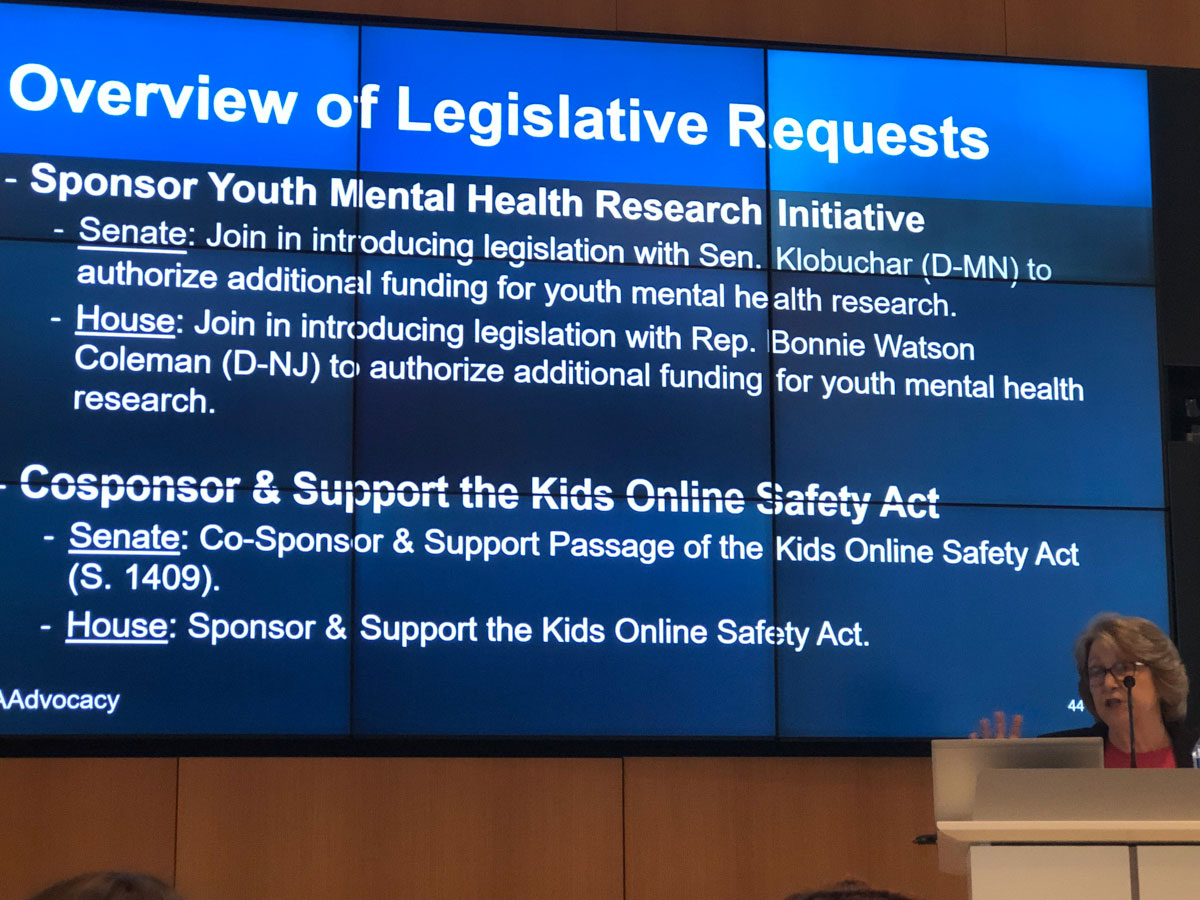 An overview of the APA’s legislative requests on Capitol HillLittle did Charmaraman know at the time that this connection with the APA—and a podcast that eventually garnered more than 15,000 views—would lead to a number of opportunities to translate her research into action by sharing it with audiences who could use it.
An overview of the APA’s legislative requests on Capitol HillLittle did Charmaraman know at the time that this connection with the APA—and a podcast that eventually garnered more than 15,000 views—would lead to a number of opportunities to translate her research into action by sharing it with audiences who could use it.
More than a year later, Mitchell J. Prinstein, Ph.D., the APA’s chief science officer, invited Charmaraman to join a task force that was writing a public advisory on social media use in adolescence.
“The task force included people I had always wanted to collaborate with who worked in widely different areas of psychology: social, clinical, community, quantitative, qualitative, diversity, etc.,” said Charmaraman. “We looked at the scientific evidence to date and came up with a list of recommendations that would be useful to parents, families, and educators.”
We looked at the scientific evidence to date and came up with a list of recommendations that would be useful to parents, families, and educators.
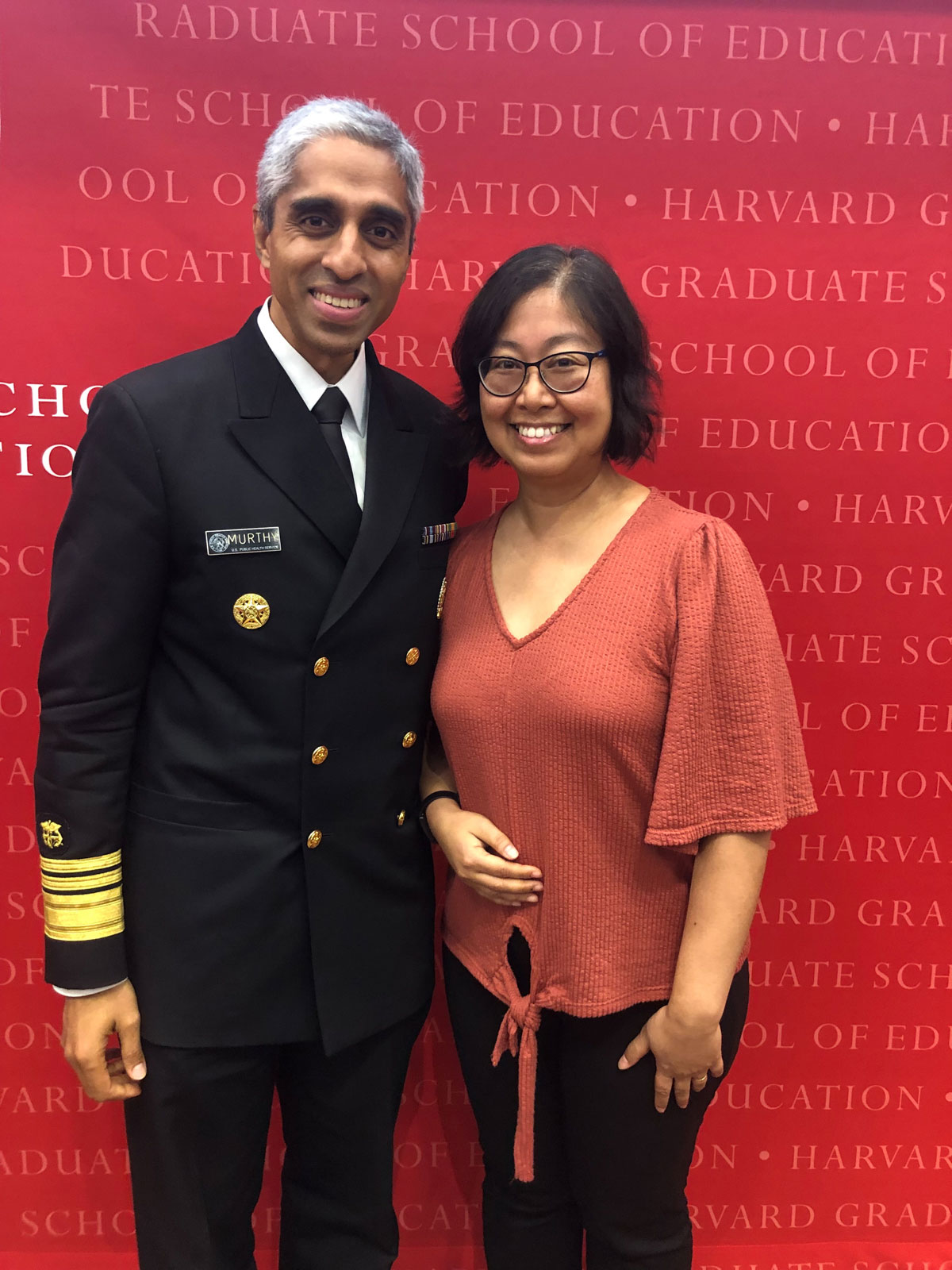 U.S. Surgeon General Vivek H. Murthy with CharmaramanReleased in May 2023, the advisory began with a simple statement about the nuance of the subject matter—nuance that has always been a hallmark of Charmaraman’s work:
U.S. Surgeon General Vivek H. Murthy with CharmaramanReleased in May 2023, the advisory began with a simple statement about the nuance of the subject matter—nuance that has always been a hallmark of Charmaraman’s work:
“Using social media is not inherently beneficial or harmful to young people… the effects of social media likely depend on what teens can do and see online, teens’ preexisting strengths or vulnerabilities, and the contexts in which they grow up.”
It went on to make 10 recommendations that covered when and how youth should use social media, the role of parental monitoring, the importance of training in social media literacy, and the need for continued research that goes beyond the focus on screen time. The advisory was written in language that anyone could understand, with the goal of providing practical guidance in an area that often felt like the Wild West.
The advisory had an immediate impact. It was downloaded 50,000 times and received more than 3,200 media hits. Both the U.S. Surgeon General and the American Academy of Pediatrics used it to inform their recommendations on teens and social media, which then received more attention from the media and the general public. (The Surgeon General’s advisory cited a book chapter Charmaraman co-authored on how marginalized and understudied groups use social media.) The topic became top of mind for many, and the murkiness of the guidance available began to become slightly clearer.
We are on our way to a better understanding of how we can help kids use social media in a healthy way.
Charmaraman’s work wasn’t done yet. In June 2023, the APA invited her to Capitol Hill along with nearly 60 APA member psychologists to advocate for the Kids Online Safety Act— which contains policies directly related to the APA advisory—and legisla- tion to fund the Youth Mental Health Research Initiative. The initiative would authorize $100 million per year for five years to the National Institutes of Health to conduct research, including research on youth and social media.
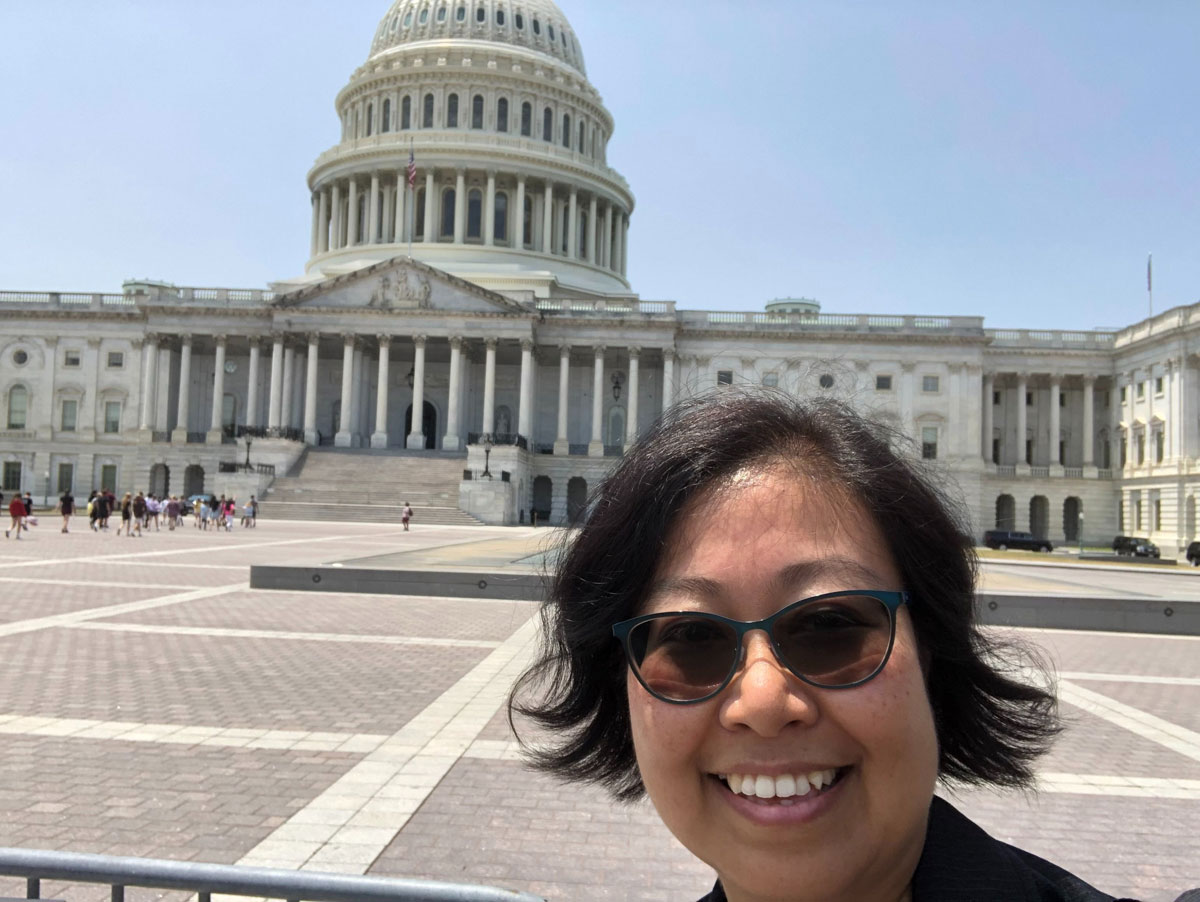 “I was paired up with a clinician and a policy advocate, and I have to say, we made a very persuasive team,” said Charmaraman, who had previously submitted written testimony in connection with a February 2023 U.S. Senate Judiciary Committee hearing on protecting children online. “We shared our elevator pitch with lawmakers and generally found a receptive audience. There was a lot of concern about the growing youth mental health crisis, and an interest in the potential to regulate social media to enhance its opportunities and reduce harms.”
“I was paired up with a clinician and a policy advocate, and I have to say, we made a very persuasive team,” said Charmaraman, who had previously submitted written testimony in connection with a February 2023 U.S. Senate Judiciary Committee hearing on protecting children online. “We shared our elevator pitch with lawmakers and generally found a receptive audience. There was a lot of concern about the growing youth mental health crisis, and an interest in the potential to regulate social media to enhance its opportunities and reduce harms.”
A month later, Charmaraman participated in a meeting with the Future Forum Caucus, composed of 51 younger members of Congress who focus on issues important to younger Americans. In addition, she was invited to speak to the National Association of Attorneys General, at the Harvard T.H. Chan School of Public Health, and at the Duquesne University School of Law’s Thomas R. Kline Center for Judicial Education.
In just a few months’ time, through several different avenues, Charmaraman had been able to reach a wide audience: parents, families, educators, policymakers, the legal community, and the general public. Her research, as part of a wider body of research on youth and social media, had been translated into actionable steps that ordinary people could take to help protect the teens in their lives. And it had lent credibility to proposed policies making their way through Congress.
“In an area that for a long time has been filled with uncertainty and fear, people are eager to find out what the scientific research says,” she said. “There is much more research needed, and hopefully the APA’s work on Capitol Hill will lead to more funding for that research. But we are on our way to a better understanding of how we can help kids use social media in a healthy way.”
The APA’s recommendations from its health advisory on social media use in adolescence include:
- Youth using social media should be encouraged to use functions that create opportunities for social support, online companionship, and emotional intimacy that can promote healthy socialization.
- Social media use, functionality, and permissions/consenting should be tailored to youths’ developmental capabilities; designs created for adults may not be appropriate for children.
- In early adolescence (i.e., typically 10–14 years), adult monitoring (i.e., ongoing review, discussion, and coaching around social media content) is advised for most youths’ social media use; autonomy may increase gradually as kids age and if they gain digital literacy skills. However, monitoring should be balanced with youths’ appropriate needs for privacy.
- To reduce the risks of psychological harm, adolescents’ exposure to content on social media that depicts illegal or psychologically maladaptive behavior, including content that instructs or encourages youth to engage in health-risk behaviors, such as self-harm (e.g., cutting, suicide), harm to others, or those that encourage eating-disordered behavior (e.g., restrictive eating, purging, excessive exercise) should be minimized, reported, and removed; moreover, technology should not drive users to this content.
- To minimize psychological harm, adolescents’ exposure to “cyberhate” including online discrimination, prejudice, hate, or cyberbullying especially directed toward a marginalized group (e.g., racial, ethnic, gender, sexual, religious, ability status), or toward an individual because of their identity or allyship with a marginalized group should be minimized.
- Adolescents should be routinely screened for signs of “problematic social media use” that can impair their ability to engage in daily roles and routines, and may present risk for more serious psychological harms over time.
- The use of social media should be limited so as to not interfere with adolescents’ sleep and physical activity.
- Adolescents should limit use of social media for social comparison, particularly around beauty- or appearance- related content. • Adolescents’ social media use should be preceded by training in social media literacy to ensure that users have developed psychologically-informed competencies and skills that will maximize the chances for balanced, safe, and meaningful social media use.
- Substantial resources should be provided for continued scientific examination of the positive and negative effects of social media on adolescent development.
Read the full text of the recommendations at wcwonline.org/apaadvisory

